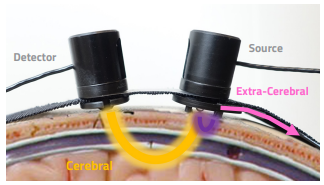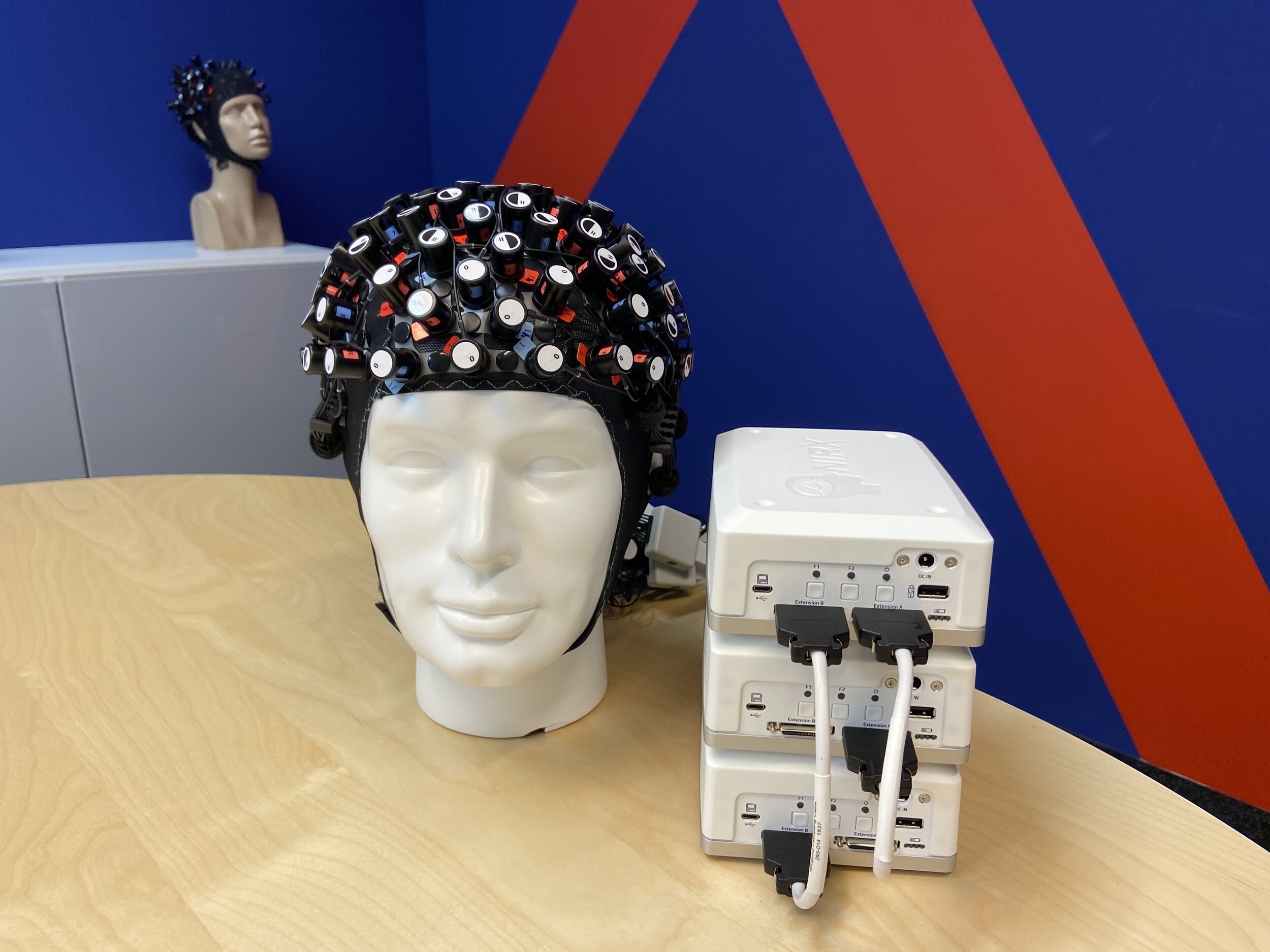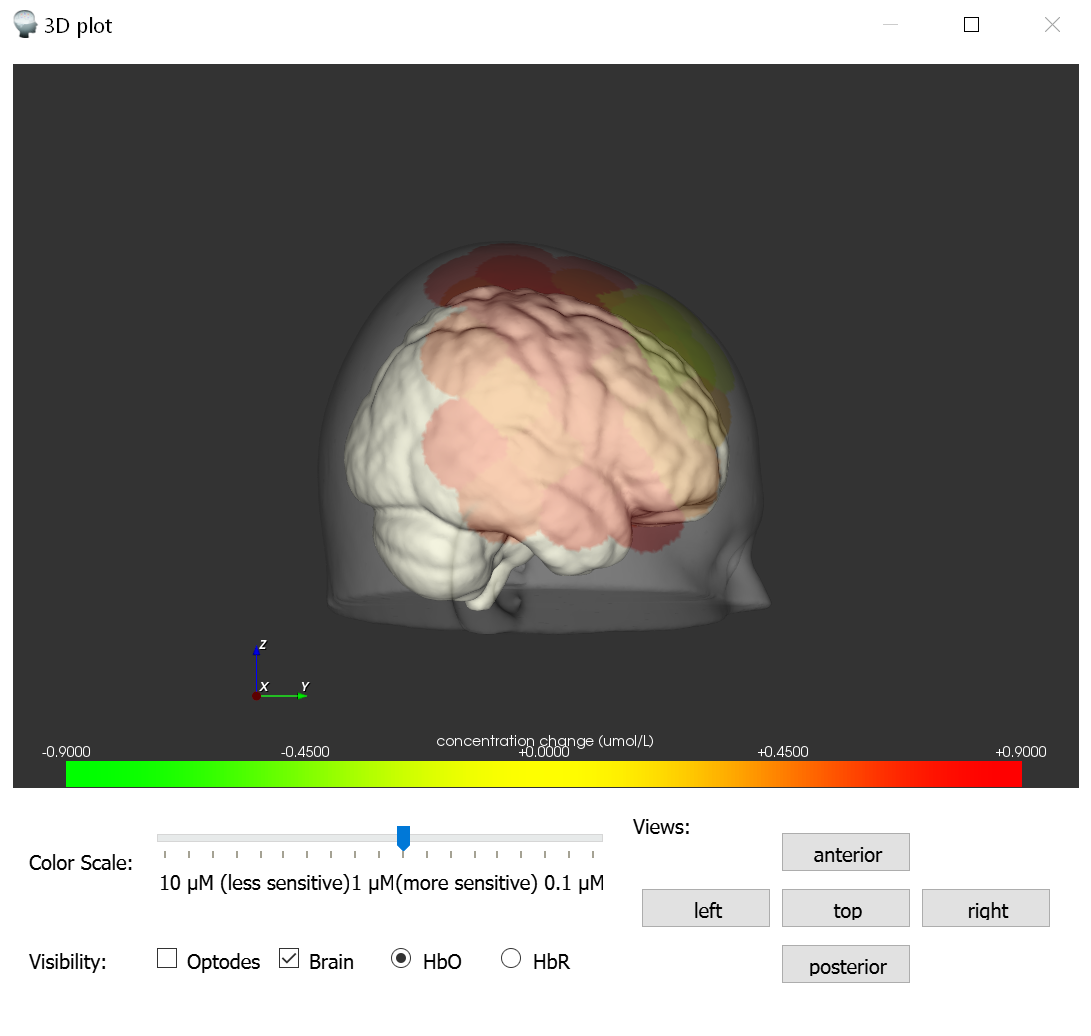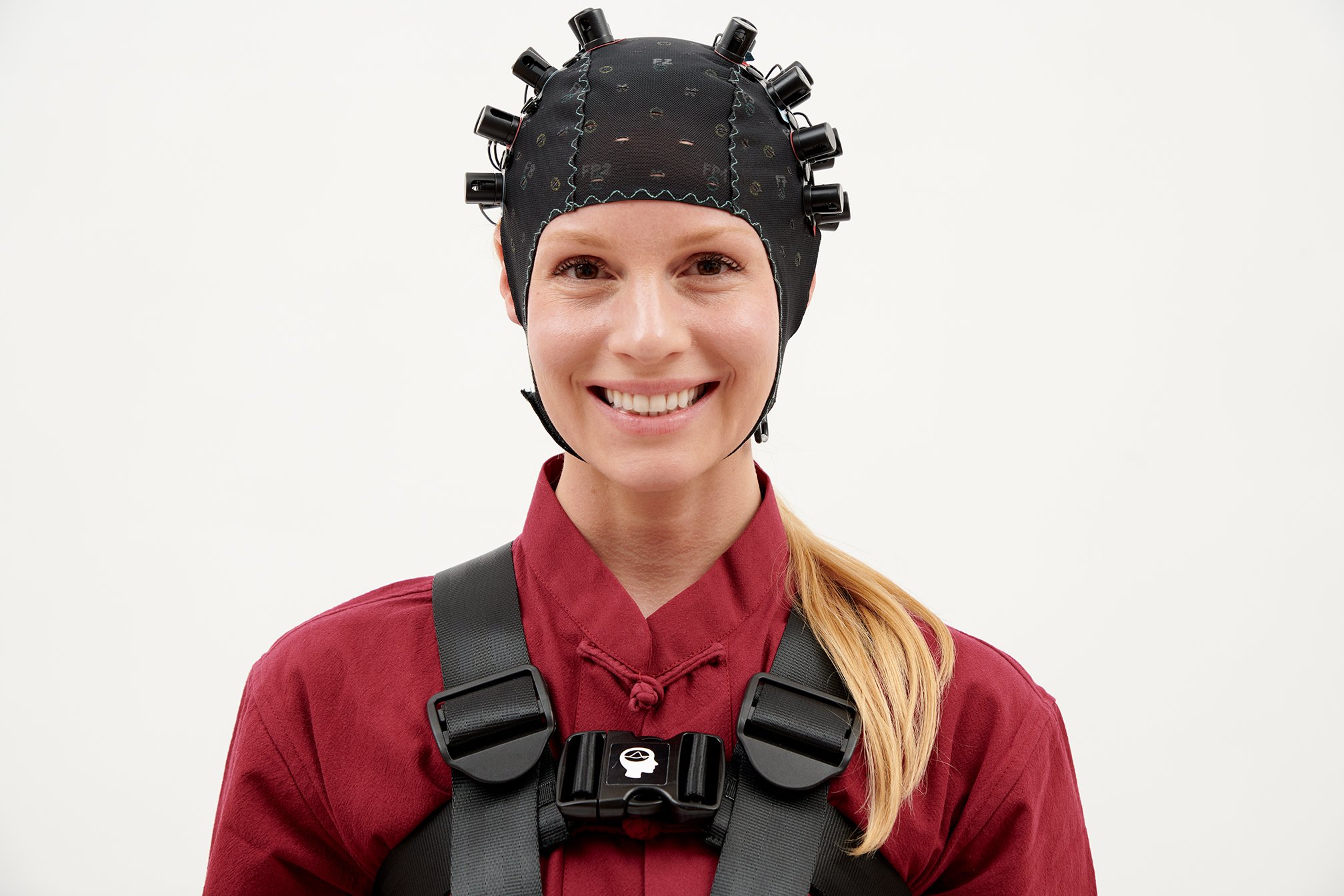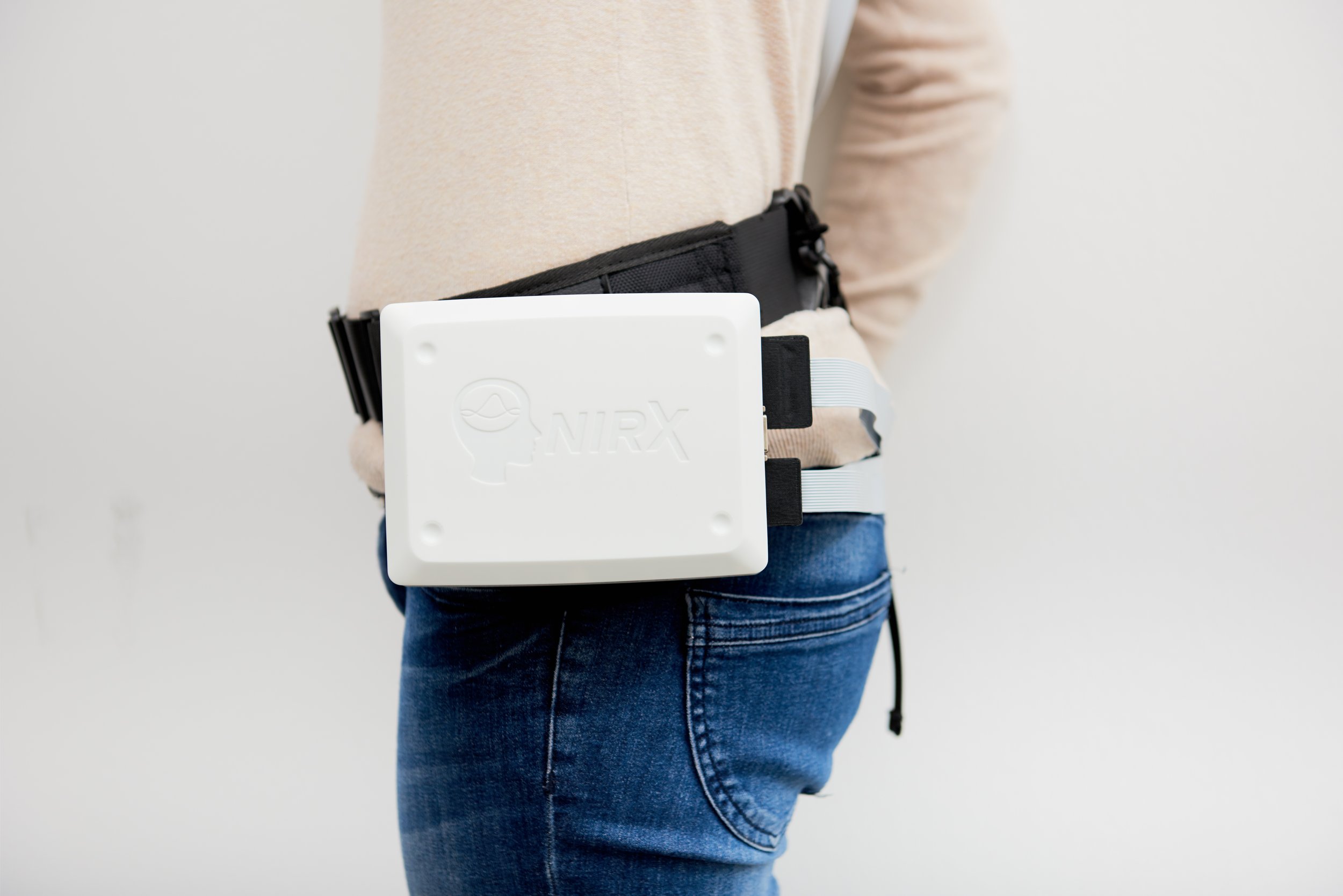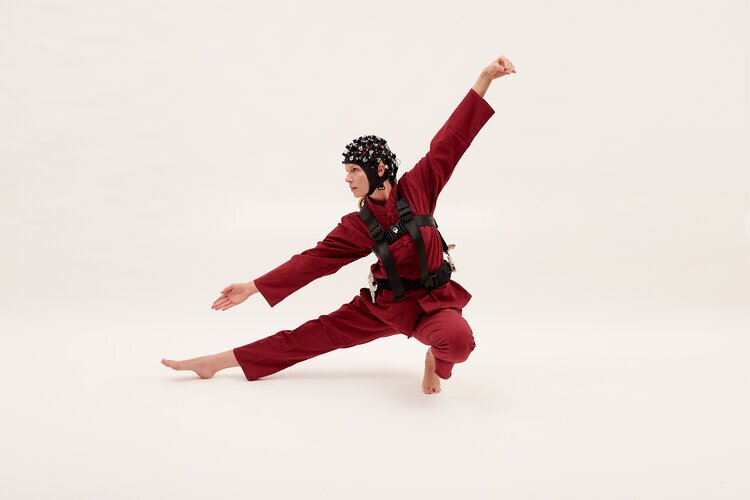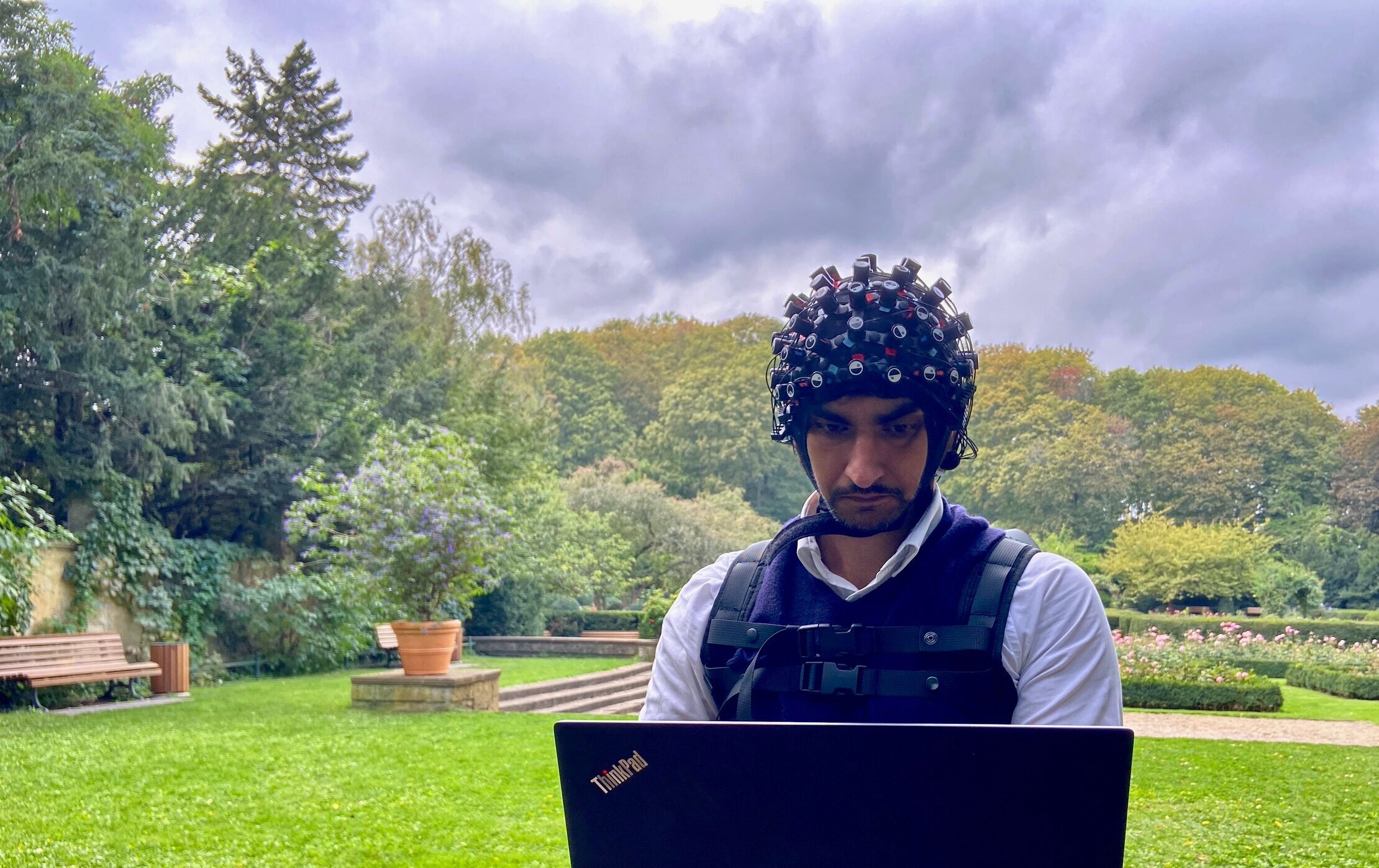
The NIRSport2 system is our most technologically advanced fNIRS platform with a range of features and functions unparalleled within the market. With the highest-class of components as our starting point we’ve engineered a system boasting impressive signal quality, extensive versatility, modularity, along with the foresight into future research needs to ensure the most optimal user experience and highest success in science possible.
The NIRSport2 offers desirable modularity and exceptional 10x scalability from 8 to 80 sources and detectors possible. System divisions are found in various detector arrangements.
NIRSport2 Advantages
Modularity and Scalability
Modularity in divisions of 8 sources 8 detectors
Exceptional scalability from 8 - 80 sources and 8 - 80 detectors. The base device comes in 8 x 8 and 16 x 16.
Up to 5 devices can be fully synchronized.
Signal Quality
Short distance channels within spring holders
High powered dual LEDs 32mW maximum illumination / optional next generation APD detectors with down to 5 fW sensitivity.
Proprietary automated ultra-fast source and detector specific signal optimization.
Variable tension spring holders offering optimal scalp coupling and comfort.
Full array short-distance detectors available.
Probe-level 9-axis accelerometer(s).
Signal quality is assured by our high-powered dual-tipped LEDs in combination with our variable tension Spring holders offering optimal scalp coupling along with our high performance SiPD or next generation APD detectors. Provisions for addressing extracerebral sources of confound include literature-recommended 8mm short-distance detectors with full array/head placement, as well as probe-level 9-axis accelerometry.
High-density arrangement with 48 sources and 48 detector arrangement with 3 connected fNIRS NIRSport2 devices.
Versatility
Specialized solutions for various applications and modalities; EEG, VR, TMS, MRI, VR etc.
Lightweight & compact form factor ~900 grams.
Wireless connection and onboard storage for tetherless recordings.
The NIRSport2 has been designed as a research platform from the ground up, yet with motion and movement in mind. Integration solutions are provided. Sporting a small form factor (162 mm x 125 mm x 60 mm) and weighing in at just 900 grams, it offers considerable versatility in motion-based applications. Furthermore fixation and integration solutions are provided for those applications involving other modalities, such as EEG, VR, and MRI*.
Functionality
Aurora fNIRS Recording Software
The NIRSport2 comes together with Aurora fNIRS: our innovative software platform designed to maximize user-friendliness, flexibility and intuitive workflow.
In just a few clicks, Aurora fNIRS allows you to set-up a complete experimental configuration. The automated signal optimization algorithm ensures optimal signal quality before a measurement is started. Once data is being recorded, HbO and Hb concentration changes can be visualized in real-time in several display modes. In addition, high-end whole-head visualizations are immediately available.
Aurora fNIRS is developed exclusively for the NIRx NIRSport2. Learn more about Aurora fNIRS.
Turbo Satori Real-Time fNIRS Analysis Software
The NIRSport2 platform is fully integrated with Turbo-Satori for real-time online analysis within neuro-feedback and BCI applications. For more details, please see here www.nirx.net/turbo-satori.
Satori - Powerful and Easy to use fNIRS Analysis Software
Satori natively reads the data recorded with the NIRSport2 and Aurora. Satori includes the current standard fNIRS processing methods and statistical tools. For more details, please see here www.nirx.net/satori.
NIRSport2 Extensions
Concurrent Physiological Measurements with NIRxWINGS
The NIRxWINGS module for peripheral physiology measurements extends the NIRSport2. You can collect pulse oximetry (PPG), heart-rate variability (HRV), oxygen saturation (SpO2), respiration, temperature, galvanic skin response (GSR), and bipolar signals such as EMG and ECG. All signals fully synchronized and in one data stream.
NIRxBorealis translating fMRI to fNIRS
NIRxBorealis couples up to two NIRSport2 devices with optical fiber-based optodes for fNIRS data acquisition in an MRI environment. The primary advantage of this system is the flexibility to use the very same NIRSport2 platform for both mobile and MRI-integrated experiments. NIRxBorealis offers ability for low profile fibers for transcranial magnetic stimulation (TMS).
There have been over 1000 publications with our systems, check out more papers on this page or view the selected NIRSport2 publications below.
+ Selected Publications
Valdés, Bulmaro A., et al. "Cortical Effects of Noisy Galvanic Vestibular Stimulation Using Functional Near-Infrared Spectroscopy." Sensors 21.4 (2021): 1476.
Zhu, Yibo, et al. "Neural and biomechanical tradeoffs associated with human-exoskeleton interactions." Applied ergonomics 96 (2021): 103494.
Gropman, Andrea L., and Afrouz Anderson. "Novel imaging technologies for genetic diagnoses in the inborn errors of metabolism." Journal of Translational Genetics and Genomics 4.4 (2020): 429-445.
Copeland, Chris. "Effects of Novel Tool Use: Cortical and Functional Measures in Children Using a Prosthetic Simulator." (2020).
Karthikeyan, Rohith, and Ranjana K. Mehta. "Towards a Closed-Loop Neurostimulation Platform for Augmenting Operator Vigilance." 2020 IEEE International Conference on Systems, Man, and Cybernetics (SMC). IEEE, 2020.
Meidenbauer, Kimberly L., et al. "Load-dependent relationships between frontal fNIRS activity and performance: A data-driven PLS approach." NeuroImage 230 (2021): 117795.
Peters, Sue, et al. "Passive, yet not inactive: robotic exoskeleton walking increases cortical activation dependent on task." Journal of NeuroEngineering and Rehabilitation 17.1 (2020): 1-12.
Lee, Gihyoun, et al. "Hemodynamic Activity and Connectivity of the Prefrontal Cortex by Using Functional Near-Infrared Spectroscopy during Color-Word Interference Test in Korean and English Language." Brain Sciences 10.8 (2020): 484.
Yang, Chieh-Ling, et al. "Cortical activation during shoulder and finger movements in healthy adults: A functional near-infrared spectroscopy (fNIRS) Study." Frontiers in Human Neuroscience 14 (2020).
Karthikeyan, Priya, et al. "Optics based label-free techniques and applications in brain monitoring." Applied Sciences 10.6 (2020): 2196.
Gropman, Andrea L., and Afrouz Anderson. "Novel imaging technologies for genetic diagnoses in the inborn errors of metabolism." Journal of Translational Genetics and Genomics 4.4 (2020): 429-445.
Technical Specifications
| Sources | 8-80 |
| Detectors | 8-80 |
| Source Illumination Type | LED |
| Source Wavelengths | LED: 760nm & 850nm |
| Detector Sensor | Silicon Photodiode (SiPD) or Avalanche Photodiode (APD) |
| Detector Dynamic Range & Sensitivity | > 80 dBopt measurement dynamic range |
| Optode type | Single-tip, or specialized Dual-tip optodes (faster set-up time and better contact to skin), Blunt-Tip (infant and child applications, better comfort), or APDs for extra sensitivity |
| Maximum number of topographic channels | 45-55 channels, depends on optode layout used |
| Maximum number of tomographic channels | 256 |
| Sampling Rate | Up to 240 Hz |
| Spectroscopic Technique, Phase Type | Continuous Wave, Single Phase |
| 3D Depth-discrimination | Yes* |
| Operation mode | USB, Wi-Fi, Stand-alone direct-to-device recording mode: no computer, tablet, or smartphone required |
| Hyperscanning Configuration | Wireless hyperscanning (up to 10 or more subjects) including singe device hyperscanning |
| Included Data Acquisition Software | Aurora fNIRS |
| Data Format | Raw light intensity: tab-delimited (may be analyzed in any environment) |
| Data Output Options | NIRx format: .wl1, .wl2, etc.; *.NIRS format; *.SNIRF format |
| Event Synchronization | Wireless (LSL; Lab Streaming Layer), Cable (8-bit TTL Input) |
| Headgear | NIRScaps: freely-configurable, measures whole head, fits all age ranges, multi-modal |
| BCI/Neurofeedback | Optional module for Aurora fNIRS |
| Multi-modal Compatibility | Built-in: EEG, tDCS/TES, eye-tracking, motion-tracking Requiring module: fMRI, MEG, TMS |
| Multi-distance/Short-distance detectors | Yes, split one detector channel into 8 short channels |
| Included Accessories | NIRScaps, System carrying case, Trigger cable |
| Optional Accessories | Recording/Analysis Computers, Computer cart, Active Trigger Splitter, fMRI/TMS/MEG Compatibility, Flat and Blunt-tipped Probes, Animal NIRS Module, BCI/neurofeedback - fully compatible with Turbo Satori https://www.nirx.net/turbo-satori |
| Temperature Range | 10 - 40C (operating), -15 - 70C (storage) |
| Humidity | 20% - 80% Relative, Non-condensing |
| Power Supply Voltage and Consumption | 90 to 250 VAC (50Hz - 60Hz); 175W Max |
| Dimensions (WxHxL), Net Weight | 162 mm x 125 mm x 60 mm, 970 g |
| Acceleration sensor specifications | * 9 axes (3 linear acceleration + 3 gyroscope axes + 3 magnetometric measurements) 100 Hz sampling rate, low-pass filtered with a 3dB cutoff at 40 Hz. Temperature range: -40 - + 60 °C (sampling rate accuracy over temperature range: +- 1%). Range: +- 2 g. Resolution/sensitivity: 16 bit (i.e. 0.061 milli-g). Noise: less than 1.3 milli-g |
| Gyroscope specifications | range: +- 2000 °/sec * zero-rate offset: +- 3 °/sec * Resolution/sensitivity: 16 bit (0.061 °/s) * noise: less than 0.08/sec |


